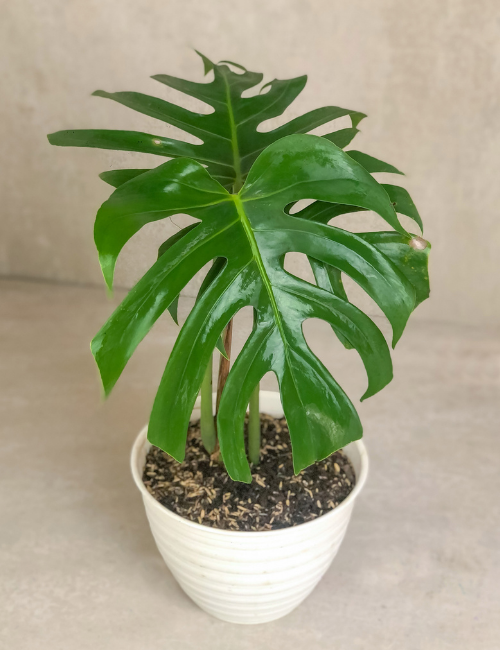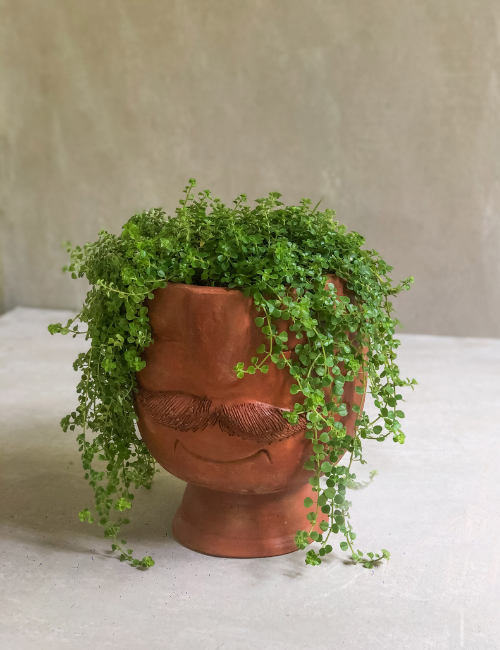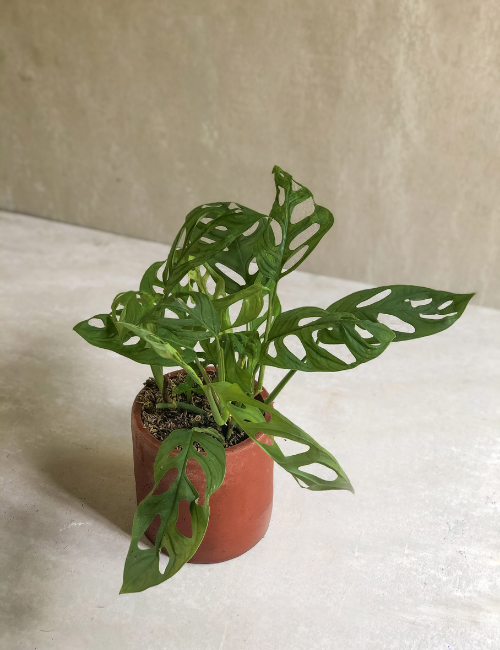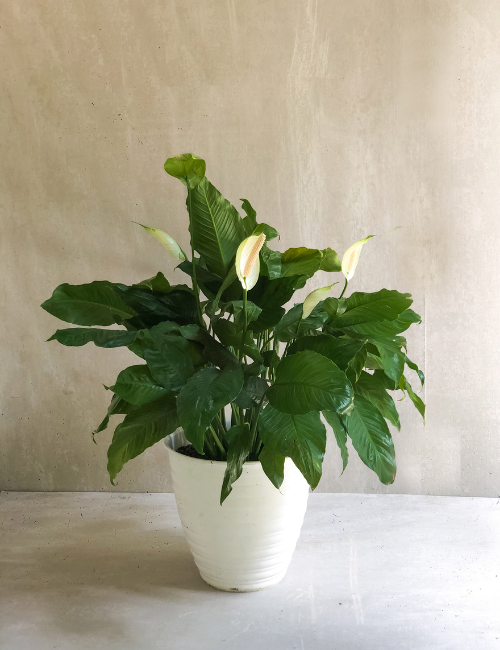-
 Begonia Malculata. Begonia maculata, or Polka Dot begonia as it’s often called, is a splashy show-stopper that looks fantastic with it’s olive green leaves and contrasting spots. It’s a houseplant that is likely to turn heads in your home, and thankfully it isn’t too difficult to care for. Bright, indirect light. Higher light levels will promote strong growth and blooms, but avoid direct sunlight Keep the soil generally moist, letting the top half inch of soil dry out between watering. Will not tolerate soggy soil.
Begonia Malculata. Begonia maculata, or Polka Dot begonia as it’s often called, is a splashy show-stopper that looks fantastic with it’s olive green leaves and contrasting spots. It’s a houseplant that is likely to turn heads in your home, and thankfully it isn’t too difficult to care for. Bright, indirect light. Higher light levels will promote strong growth and blooms, but avoid direct sunlight Keep the soil generally moist, letting the top half inch of soil dry out between watering. Will not tolerate soggy soil. -
 Monstera Borsigiana. Monstera Borsigiana, otherwise known as the Swiss cheese plant, grows wildly in the jungles of southern Mexico and Panama. These leafy guys look great in any home and make a statement in almost any corner of a room. The right amount of sunlight is essential for a monstera’s leaf development. Place it in a spot where it can receive filtered, indirect sunlight. 2-3 times a week. Water sparingly, making the potting mixture barely moist and allowing the top third to dry out before watering again.
Monstera Borsigiana. Monstera Borsigiana, otherwise known as the Swiss cheese plant, grows wildly in the jungles of southern Mexico and Panama. These leafy guys look great in any home and make a statement in almost any corner of a room. The right amount of sunlight is essential for a monstera’s leaf development. Place it in a spot where it can receive filtered, indirect sunlight. 2-3 times a week. Water sparingly, making the potting mixture barely moist and allowing the top third to dry out before watering again. -
 Pilea Depressa in Pedro Terracotta. Pilea Depressa is an evergreen ornamental climber native to Brazil and Mexico. The tiny green leaves with scalloped edges are less than ¼ of an inch and grow on delicate pinkish stems. Numerous tiny, white, petal-less flowers grow in the spring to make it nothing less than a fairy vine. Price include Pedro Terracotta. The plant usually requires bright shade. In outdoors, select a well-lit shady area. Importantly, keep it away from direct sun, especially the peak hours. 2-3 times a week, make sure the top or 2-3 cm of the soil should be kept moist
Pilea Depressa in Pedro Terracotta. Pilea Depressa is an evergreen ornamental climber native to Brazil and Mexico. The tiny green leaves with scalloped edges are less than ¼ of an inch and grow on delicate pinkish stems. Numerous tiny, white, petal-less flowers grow in the spring to make it nothing less than a fairy vine. Price include Pedro Terracotta. The plant usually requires bright shade. In outdoors, select a well-lit shady area. Importantly, keep it away from direct sun, especially the peak hours. 2-3 times a week, make sure the top or 2-3 cm of the soil should be kept moist -
 The official name of this plant is Epipremnum pinnatum, the name of the variety "Aureum". However, the plant is better known under the old name: Scindapsus aureum, simply "Scindapsus". The Scindapsus belongs to the Araceae family and is native to the forests of Southeast Asia, where the leaves of the climbing plant can grow up to 100 cm. The European variety is a youthful form of this plant. Diameter pot 25cm Semi-shade, no direct sunlight The soil of the Scindapsus should never be dry and should therefore always be kept slightly moist. The plant is also used to this naturally in the rainforests. Too much water is not good and therefore make sure that there is no layer of water at the bottom of the pot.
The official name of this plant is Epipremnum pinnatum, the name of the variety "Aureum". However, the plant is better known under the old name: Scindapsus aureum, simply "Scindapsus". The Scindapsus belongs to the Araceae family and is native to the forests of Southeast Asia, where the leaves of the climbing plant can grow up to 100 cm. The European variety is a youthful form of this plant. Diameter pot 25cm Semi-shade, no direct sunlight The soil of the Scindapsus should never be dry and should therefore always be kept slightly moist. The plant is also used to this naturally in the rainforests. Too much water is not good and therefore make sure that there is no layer of water at the bottom of the pot. -
 Monstera Adansonii in Terracotta. The Swiss cheese plant, Monstera Adansonii, gets its name from its large, heart-shaped leaves, and as the plant ages, the leaves develop holes (called fenestration) that makes the leaves resemble Swiss cheese. Swiss cheese plant is a tropical perennial plant native to Central and South American that is typically grown as a houseplant. Swiss cheese plant is very easy to grow. The plants grow best in indirect sunlight. If direct sunlight is unavoidable, limit the exposure to just two to three hours of morning sun. 2-3 times a week. If the soil is nearly dry, water it don't let the soil dry out entirely.
Monstera Adansonii in Terracotta. The Swiss cheese plant, Monstera Adansonii, gets its name from its large, heart-shaped leaves, and as the plant ages, the leaves develop holes (called fenestration) that makes the leaves resemble Swiss cheese. Swiss cheese plant is a tropical perennial plant native to Central and South American that is typically grown as a houseplant. Swiss cheese plant is very easy to grow. The plants grow best in indirect sunlight. If direct sunlight is unavoidable, limit the exposure to just two to three hours of morning sun. 2-3 times a week. If the soil is nearly dry, water it don't let the soil dry out entirely. -
 Peace Lily. Peace lilies are tropical, evergreen plants that thrive on the forest floor, where they receive dappled sunlight and consistent moisture. This tropical shade-loving plant helps cleanse the air we breathe. While we all appreciate cleaner, oxygenated air, it’s also the easy peace lily care, resiliency and forgiving nature that makes them such popular houseplants. This Peace Lily is Extra Large size with height between 80 – 100cm and pot diameter 45cm. Keep these plants out of direct afternoon sunlight, but in a bright, well-lit area. An east-facing window is ideal, as they will be exposed to the bright morning sun but avoid the intensity of mid-day rays. Peace lilies are far more tolerant of underwatering than overwatering, which is one of the most common reasons for a peace lily to die. Because of this, you should never water peace lily plants on a schedule. Rather, you should check them once a week to see if they need to be watered. Simply touch the top of the soil to see if it is dry. If it is, water your peace lily.
Peace Lily. Peace lilies are tropical, evergreen plants that thrive on the forest floor, where they receive dappled sunlight and consistent moisture. This tropical shade-loving plant helps cleanse the air we breathe. While we all appreciate cleaner, oxygenated air, it’s also the easy peace lily care, resiliency and forgiving nature that makes them such popular houseplants. This Peace Lily is Extra Large size with height between 80 – 100cm and pot diameter 45cm. Keep these plants out of direct afternoon sunlight, but in a bright, well-lit area. An east-facing window is ideal, as they will be exposed to the bright morning sun but avoid the intensity of mid-day rays. Peace lilies are far more tolerant of underwatering than overwatering, which is one of the most common reasons for a peace lily to die. Because of this, you should never water peace lily plants on a schedule. Rather, you should check them once a week to see if they need to be watered. Simply touch the top of the soil to see if it is dry. If it is, water your peace lily.
